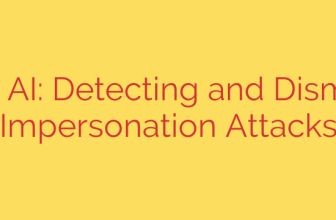
Stealthy Espionage: Flax Typhoon APT Lurked in ArcGIS Servers for Over a Year
A sophisticated, state-sponsored hacking group has demonstrated remarkable patience and stealth, maintaining persistent access to government and critical infrastructure networks by exploiting vulnerabilities in Esri ArcGIS Server software. The threat actor, identified as Flax Typhoon (also known as Ethereal Panda), successfully operated undetected for over a year, focusing its efforts on long-term espionage and data collection.
This campaign highlights the growing threat of “living-off-the-land” attacks, where adversaries use a system’s own tools to avoid detection, making their activities incredibly difficult to distinguish from legitimate administrative work.
Who is Flax Typhoon?
Flax Typhoon is a China-nexus advanced persistent threat (APT) group known for its focus on intelligence gathering. Unlike ransomware gangs that seek financial gain through disruption, Flax Typhoon’s primary objective is to establish long-term, covert access to networks of interest. Their targets typically include government agencies, educational institutions, and critical manufacturing sectors.
The group is known for its meticulous operational security, minimizing its footprint to remain hidden for extended periods.
The Attack Vector: Unpatched ArcGIS Servers
The initial point of entry for this campaign was public-facing Esri ArcGIS Server systems. These powerful mapping and analytics platforms are widely used by government and private organizations to manage and visualize geospatial data. Unfortunately, like any complex software, they can contain vulnerabilities if not properly maintained.
Flax Typhoon gained its foothold by exploiting known security flaws in outdated versions of the software. Once inside, the group moved swiftly to solidify its position and erase its entry tracks.
A Playbook of Stealth and Persistence
The group’s attack methodology reveals a deep understanding of network defense evasion. Instead of deploying noisy, custom malware, they relied almost exclusively on built-in system tools and legitimate software.
Key stages of their operation include:
- Initial Access and Persistence: After exploiting an ArcGIS Server vulnerability, the attackers deployed a simple web shell, such as the notorious China Chopper. This lightweight script provides a persistent backdoor, allowing the attackers to execute commands on the server at will.
- Living-off-the-Land (LotL) Techniques: This is the hallmark of Flax Typhoon’s strategy. They used standard Windows command-line tools to perform reconnaissance and move through the network. These tools include Windows Management Instrumentation (WMI) for executing commands,
netshfor network configuration, andnltestto map out the domain trust relationships. Because these are legitimate administrative tools, their activity is often missed by traditional antivirus solutions. - Credential Harvesting: To expand their access, the attackers used tools to dump credentials from memory, most notably targeting the Local Security Authority Subsystem Service (LSASS) process. This gave them valid user accounts, allowing them to log into other systems and move laterally across the network as if they were legitimate employees.
- Covert Command and Control (C2): To maintain communication with the compromised network, Flax Typhoon established a covert C2 channel using legitimate VPN software like SoftEther VPN. This tactic helps their malicious traffic blend in with normal network activity, making it much harder to detect and block.
The primary goal throughout this year-long intrusion was not disruption but long-term intelligence gathering. The group patiently mapped networks, collected credentials, and identified valuable data for exfiltration.
How to Defend Against Flax Typhoon and Similar Threats
This campaign serves as a critical reminder that a proactive security posture is non-negotiable. Organizations, especially those running ArcGIS Server or other public-facing applications, should take immediate steps to bolster their defenses.
Actionable Security Recommendations:
Prioritize Patch Management: The entire attack chain began with an unpatched server. Immediately apply all security updates for ArcGIS Server and all other internet-facing software. Assume that any known vulnerability will eventually be exploited.
Strengthen Credential Security: Implement multi-factor authentication (MFA) wherever possible, especially for administrative accounts. Regularly audit user privileges and enforce a policy of least privilege, ensuring users only have the access they absolutely need.
Monitor for LotL Activity: Deploy an Endpoint Detection and Response (EDR) solution capable of monitoring command-line and PowerShell activity. Look for anomalous use of legitimate tools like WMI,
netsh, andtasklist, especially when initiated by web server processes.Implement Network Segmentation: By segmenting your network, you can contain an attacker’s ability to move laterally. A compromised public-facing server should not have direct, unfettered access to sensitive internal databases or domain controllers.
Conduct Regular Security Audits: Proactively hunt for signs of compromise. Check for unauthorized scheduled tasks, unexpected new user accounts, and suspicious outbound network connections. Regularly review logs from firewalls, servers, and security tools.
The long-term, low-and-slow nature of the Flax Typhoon campaign underscores the sophistication of modern state-sponsored threats. Protecting against them requires more than just firewalls; it demands a defense-in-depth strategy built on diligent patching, vigilant monitoring, and a foundational assumption that you are a target.
Source: https://securityaffairs.com/183398/apt/flax-typhoon-apt-exploited-arcgis-server-for-over-a-year-as-a-backdoor.html








